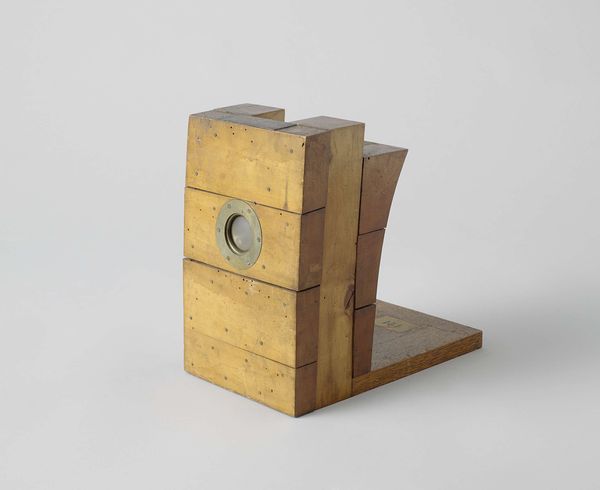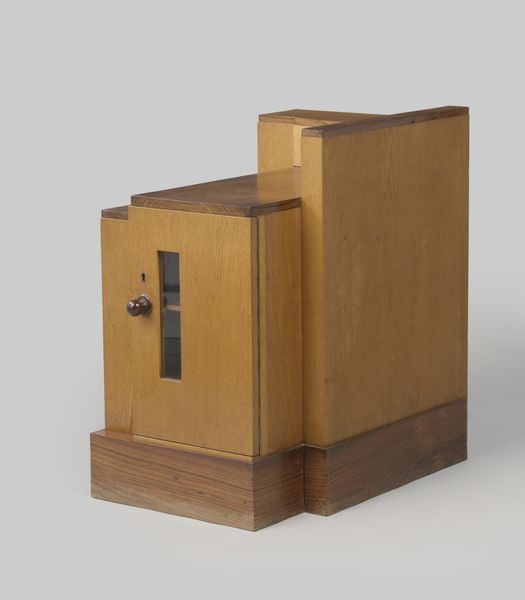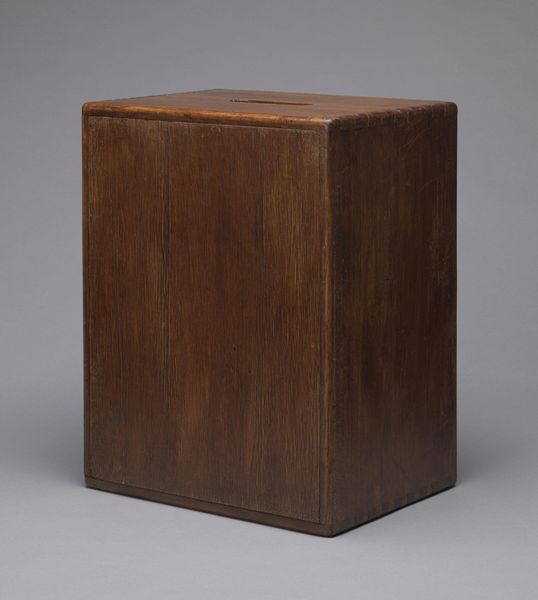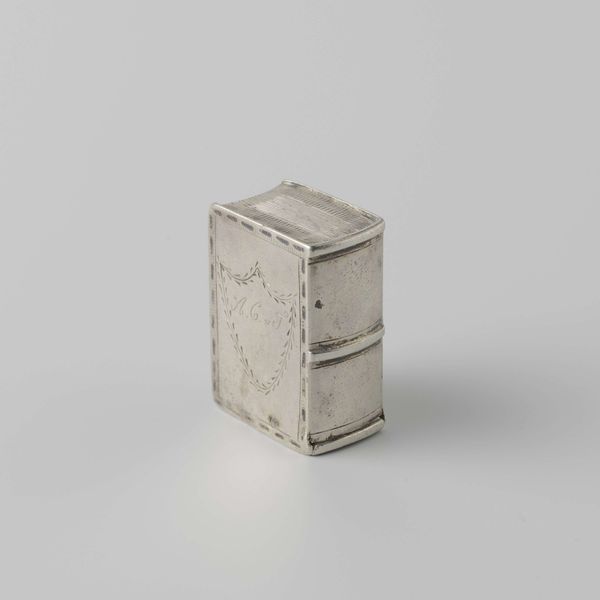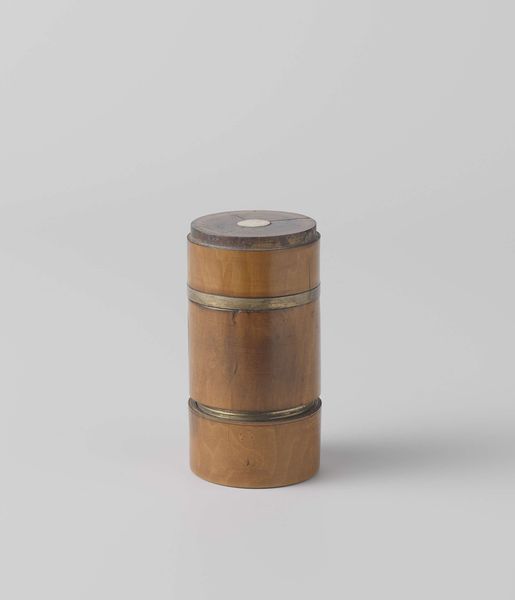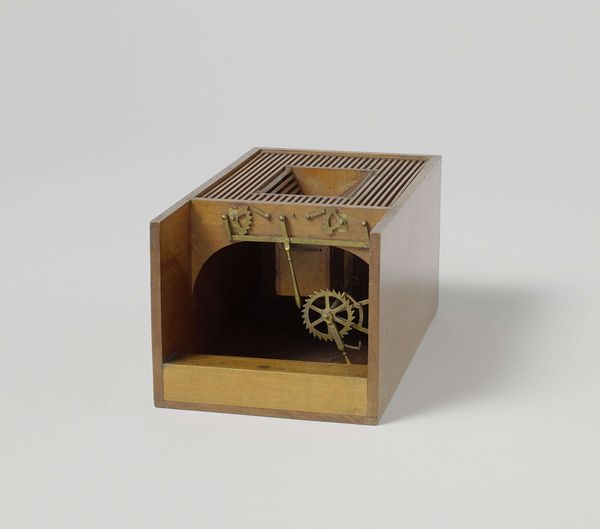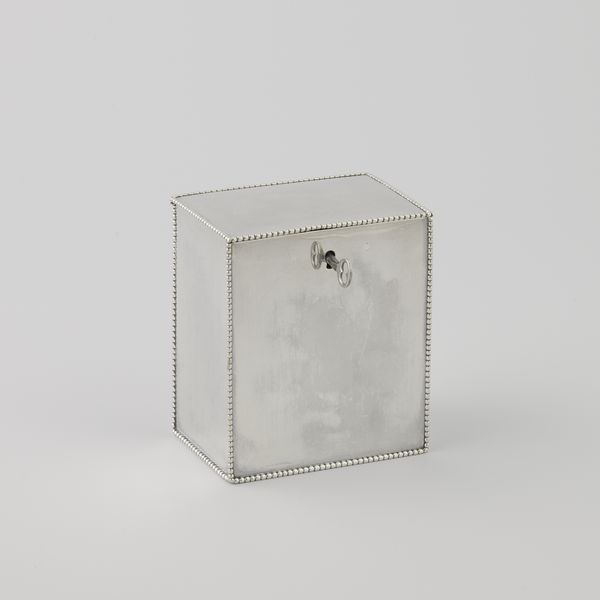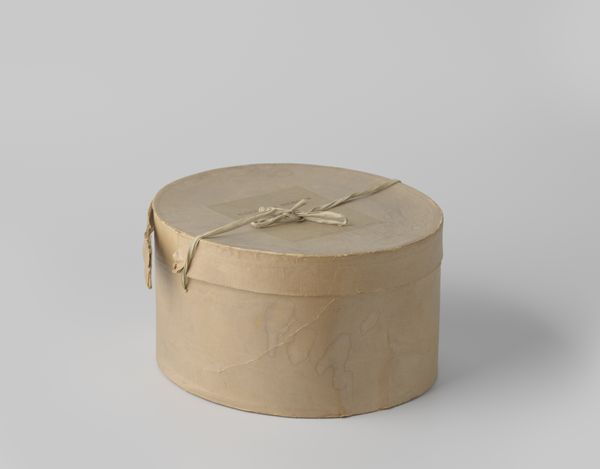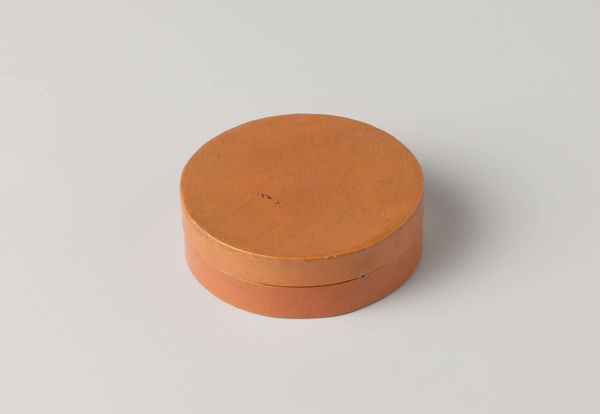
Kaartspel over Nederlands-Indië in houten doos met beeldmerk van de Rotterdamse Lloyd 19th century
0:00
0:00
wood
#
wood
#
decorative-art
Dimensions: height 9.5 cm, width 6.5 cm, thickness 1.5 cm, height 10.3 cm, width 7.8 cm, depth 4.9 cm
Copyright: Rijks Museum: Open Domain
Editor: Here we have a 19th-century wooden box made by Bernhard J. Dondorf, designed to hold playing cards about the Dutch East Indies and featuring the Rotterdamse Lloyd logo. It looks quite simple but well-crafted. What can you tell me about this object? Curator: This unassuming box presents a fascinating confluence of materiality, labour, and colonial commerce. Its very being speaks to the expansion of global trade and leisure activities that marked the 19th century. Consider the wood itself; its origin, the process of its shaping, and the labour involved in transforming it. Editor: So, you are less interested in what’s inside, the cards themselves? Curator: Not at all! The cards and the box are intimately connected, they are part of a larger commodity ecosystem that helped fuel the Industrial Revolution and global expansion. This wasn’t some individual, artistic act but a highly industrialized undertaking, from design to distribution. This piece blurs the lines between functional object, advertising material and artistic representation. Editor: How so? It is just a container for cards. Curator: Yes, but how that container communicates colonial aspirations! The Rotterdamse Lloyd was a prominent shipping line, directly profiting from trade and movement of people. So how does the branding of the box and cards, shape consumption habits, class structures, or perhaps even power structures within Dutch society? Editor: That’s true. By displaying the Rotterdamse Lloyd logo so prominently, the company directly linked itself to ideas of leisure, travel, and by implication, colonialism. I’d never have considered this beyond just… well, the box for the cards! Curator: Exactly! Now, we might ask: who crafted the wood? What were the working conditions in that shop? Through close attention to materials, production methods, and circulation routes, we unlock a richer, more complex understanding of this seemingly simple wooden box. Editor: That really shifts my perspective. I need to remember to consider not just the artistic intent, but also who created this and under what conditions!
Comments
No comments
Be the first to comment and join the conversation on the ultimate creative platform.
